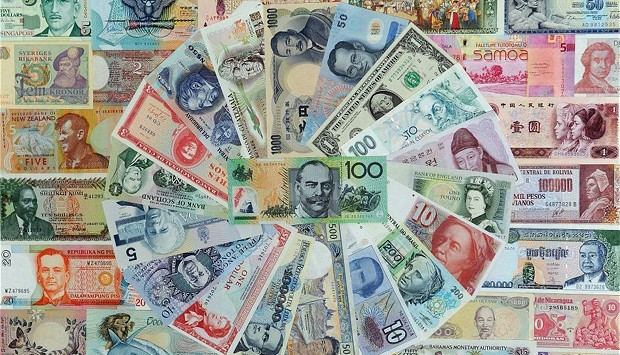
Foreign exchange? A foreign language.
It is great to see so many of you digging into the half yearly company reports this reporting season. From all of the emails I have received, the one question that keeps popping up has been about the impact of currency on profits and balance sheets. One investor asked more specifically about what it means when a company talks about their results in ‘constant currency terms’.
Let me try to explain some of the impacts and in particular the predilection for some companies to selectively discuss results in “constant currency terms”.
You will hear many analysts talking about “the currency impact” when discussing a company’s reported profits. In the press you might read headlines like these hypotheticals:
“ANZ Half Year Profit Down 2 Percent On Currency, Asia Pressures”
“RIO Profit down 37 Percent, Impacted By Currency Headwinds”
“Seek’s Profit Down 8 Percent On Currency Exchange Impact”
What exactly are they talking about?
As Australian companies mature they have several choices if they are still throwing off oodles of cash; They can buy back shares, they can pay special dividends, they can increase the payout ratio, they can make acquisitions domestically or they can expand overseas either organically or through acquisitions.
When a company expands overseas currencies will have an impact;
When a company converts foreign-earned revenues to the locally reported currency there is Translation exposure.
There is also the Transactional currency risk that arises for companies that pay for imported goods and for those that are exporting domestically sourced or manufactured products and services.
And of course there is the economic exposure, where the competitive advantage, cost of goods sold, input costs and balance sheet values are affected.
For Australian companies, when the Aussie dollar ($A or Aud) rises during a reporting period as it has in relatively recent periods, converting or translating the foreign earned revenue can put pressure on performance. The reason why is that each ‘unit’ of foreign-currency denominated revenue buys fewer Aussie dollars when it’s converted to the stronger local currency in the reported financial results.
But pressure on profits from currency changes doesn’t only occur when the Aud strengthens.
Even when the Aud falls however, companies can report profit results that have been pressured by ‘the currency effect’. This is because multinationals run hedging programs.
An exporter, for example, might be concerned that the Aud will strengthen and if they are paid in US dollars for their products, they will earn less when they convert the revenue back to the stronger Australian dollars. They are hedging, therefore, against further rises in the currency. If however the local currency slides, they don’t receive the benefit of the more favourable conversion rates.
This is when you will see a company report; “In constant currency terms, we generated higher revenues, operating income and earnings per share compared with the prior year.” Constant currency means the results have been calculated by translating current year results at the previous year’s average exchange rates.
When a company reports good results “in constant currency terms” what they want to convey is that the business has grown. Operationally it is bigger than last year. Unfortunately you, as the owner, didn’t see the benefit because of the hedge that was in place.
The reality however is that the company is playing an international game and will continue to do so and so you, as the owner, should be measuring the success of all the divisions of the business, including the hedging program.
The currency will rise and fall but its impact and that of any hedging that wasn’t needed or didn’t work is real. Owners received less than they would have otherwise because of the hedging.
So when you see commentary about Constant Currency terms, its worth digging a little deeper.
Andrew Legget
:
Very informative post Roger, thanks for putting this up and another reason why i like coming to this blog. I have only had a chance to look at a few companies. One insight i had yesterday is how much i would hate to be a cash strapped supplier to Woolworths. They almost go through their inventory twice before they pay suppliers once. Not good for them but good for Woolworths cashflow.
On currency exchange, the aussie dollar appears to be quite overvalued on almost every possible scale, 12.2% based on my favourite (big mac index). With exports to china looking to be slowing, at some point this should (has to?) come down.
I have always wondered whether this has been a good time to invest in quality US companies at a discount and use the high exhange rate as an extra lever for returns as i would be holding them for the long term and by that time the Aussie should have declined against the US. This is a speculators game though i know. Just a thought that i have had.